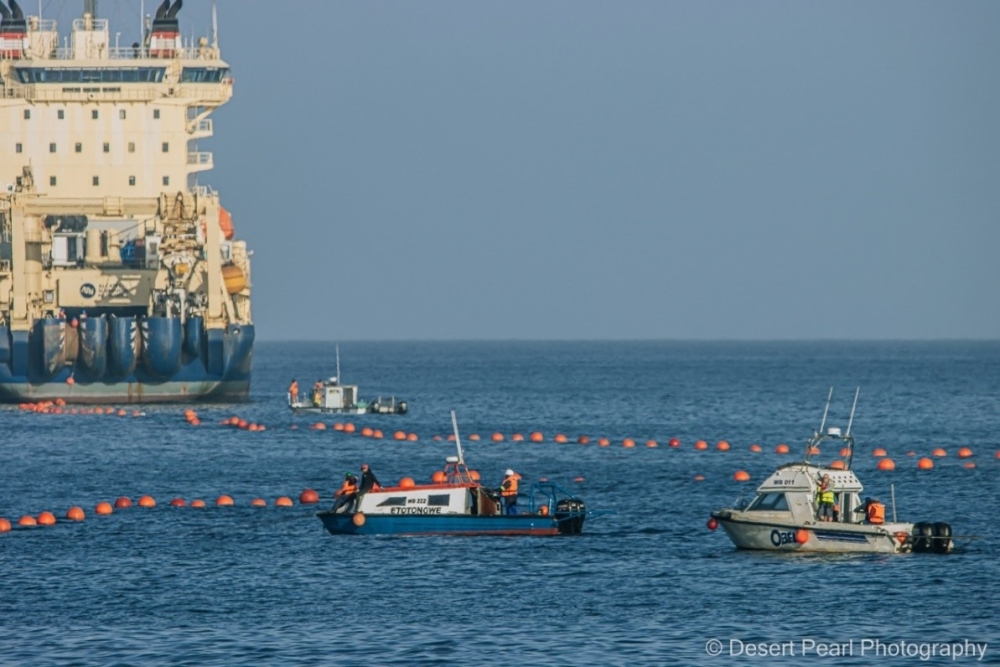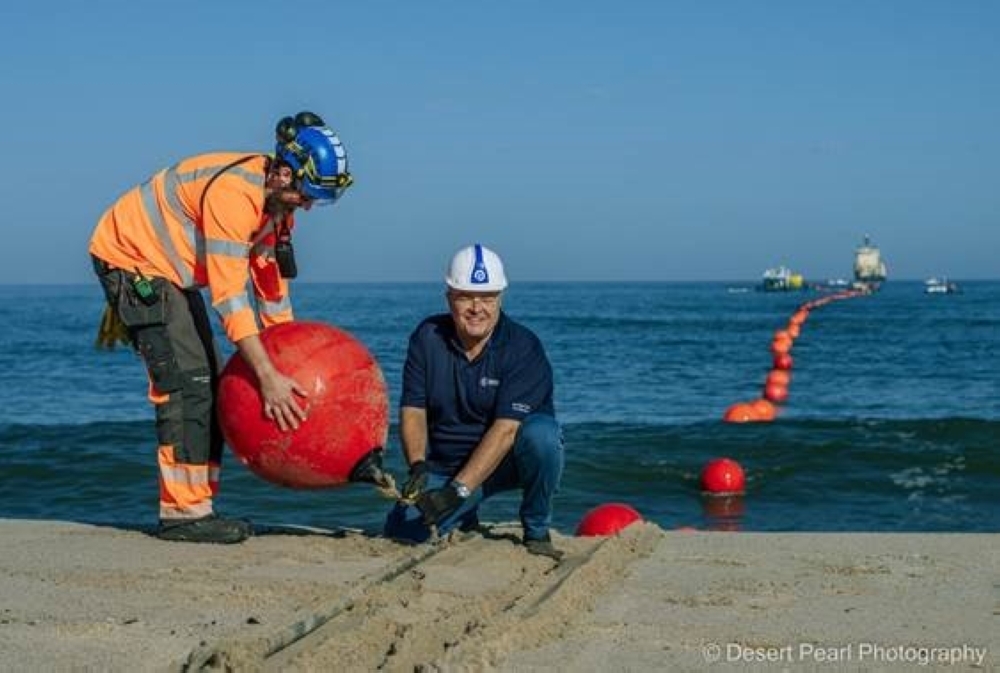The cable has landed
The Equiano subsea internet cable was brought ashore in Swakopmund on Friday morning.This comes after the announcement in February last year that the Paratus Group, together with Telecom Namibia, had been selected to build the cable landing station (CLS) for the subsea cable.
The Equiano cable provides communications diversity thanks to its increased capacity which will have a direct impact on connectivity with faster internet speeds, more flexibility in the market and an improved user experience for consumers in Namibia and beyond.
Once Equiano becomes fully operational in Q4 this year, it is expected to deliver up to 20 times more capacity than was previously available in Namibia. According to a recent economic impact assessment, conducted by Africa Practice and Genesis Analytics, and commissioned by Google, Equiano's arrival in Namibia is set to increase internet speeds by over 2.5 times; increase internet penetration by 7.5% in the next three years; and act as a catalyst for considerable growth, job creation and sustainability.
Commenting on the landing of Equiano in Namibia managing director of Google Sub-Saharan Africa, Nitin Gajria, said that Google is committed to supporting Africa’s digital transformation. “We are excited to see the impact of the landing of Equiano in Namibia. We've worked with experts - Paratus Group and Telecom Namibia - to guarantee that Equiano has the greatest potential effect in Namibia and throughout Africa.”
Readiness
Paratus completed the building of the CLS in September last year, and the internal fit - including power, cabling cabinets, conduits, raceways, cages, and security - was completed in January 2022.
As current CEO of Paratus Group, Barney Harmse explains: “Namibia has higher internet connection levels - at 40.5% compared with an average of 29% for sub-Saharan African countries - but has relied upon the West Africa Cable System (WACS) for its international connectivity until now. The landing of the Equiano cable will significantly increase Namibia’s international bandwidth capacity as it is four times greater than WACS. This will not only ensure better stability of connectivity in the country, but also lower latency and higher speeds in global transmission of data.”
He said that the landing was a landmark event and a great day for Namibia’s digital transformation. “We are very proud to be the Google landing partner, and infrastructure partner with Telecom Namibia, to deliver better connectivity to everyone in Namibia.”
‘Major step’
Telecom Namibia CEO, Dr Stanley Shanapinda said that the Google Equiano Cable shore landing is a major step in the development of Namibia’s national telecommunications infrastructure.
“This cable will become a critical element in meeting Namibia’s current and future international connectivity demands, as the cable incorporates new technology that enables approximately 20 times more network capacity than the current WACS cable.
“Improved connectivity will accelerate job creation. Between 2022 and 2025, Equiano is expected to indirectly create 21 000 jobs in Namibia, driven by the expansion of the digital economy and associated business sectors. This is also in line with Namibia’s long-term development framework – Vision 2030 – which positions ICT as a key pillar of the country’s economy.”




